FREE shipping on orders over $49!* Details
- Skylights
Skylights
11 Results
Sort by:
Price
11 Results
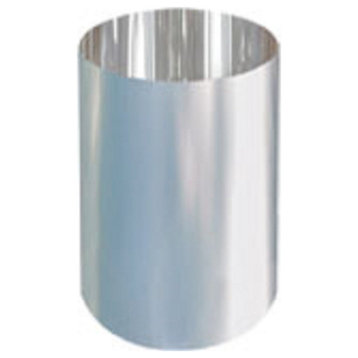
Tubular Skylight 2 Feet Tube Extensionby Invenitiah Furnishings
$106
Free Shipping
- Brand: Invenitiah Furnishings
- Invenitiah Furnishings brand 10"" Tubular Skylight Extension 24"" length.
- Note: For use with Invenitiah Furnishings brand 10"" Skylights only.
- Invenitiah Furnishings brand 10"" diameter 2-foot tubing extension for use with Invenitiah Furnishings brand 10"" skylights only.
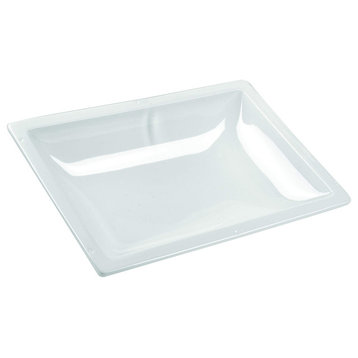
White Inner Garnish for Rectangular Skylight Domeby Invenitiah Furnishings
$196
Free Shipping
- Brand: Invenitiah Furnishings
- Inner Garnish for Rectangular Skylight Dome
- White inner garnish fits hole size 22 inch x 22 inch, flange size 24 inch x 24 inch, 4 inch Height
- Package Dimension : 12.7 cms L x 66.0 cms W x 66.0 cms H
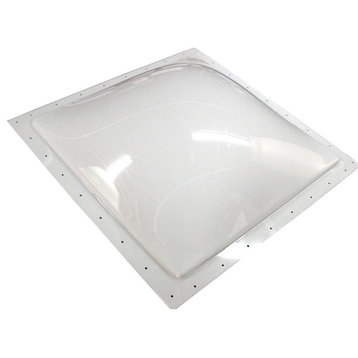
15"x18" Skylight by Invenitiahby Invenitiah Furnishings
Note: inners must be the exact size as the hole you are working with.
$199
Free Shipping
- Brand Invenitiah Furnishings
- Special Feature Long Lasting
- Wattage 23 watts
- Unit Count 1.0 Count
- Package Dimensions: 27 L x 6 H x 23 W (inches)
- Package Weight : 5 pounds
Note: inners must be the exact size as the hole you are working with.
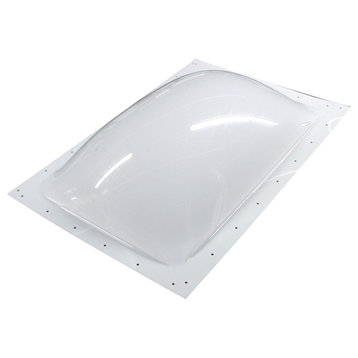
Impressive Design Skylight by Invenitiah LLCby Invenitiah Furnishings
$216
Free Shipping
- Brand Invenitiah Furnishings
- Skylights are made of high performance thermoformed polycarbonate to be long lasting and easy to clean
- When choosing a Skylight, measure your rough hole opening as well as the overall exterior size
- There is a size to replace most manufacturer's original equipment
- Skylights sit directly on your RV roof
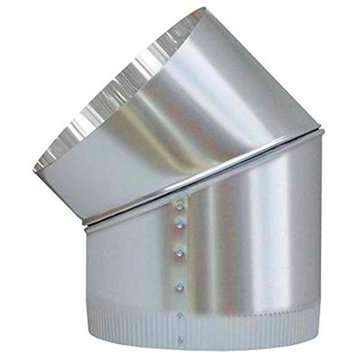
Natural Light Pipe (Elbow Angle Adapter)by Invenitiah Furnishings
$115
Free Shipping
- Material Aluminum
- Brand Invenitiah Furnishings
- Style Modern
- Product Dimensions 12"L x 10"W x 10"H
- Invenitiah Furnishings Tubular Skylight 10″ angle adapter (or elbow).
- Elbows are fully adjustable from 0 45 degrees. 10"" diameter x 12"" length.
- For Invenitiah Furnishings brand 10 Tubular Skylight only.
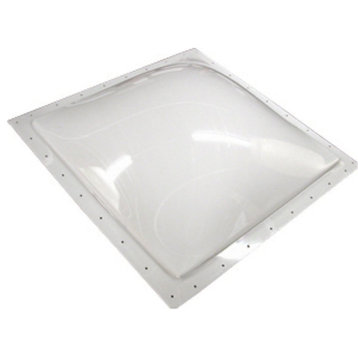
Skylightby Invenitiah Furnishings
Note: inners must be the exact size as the hole you are working with. Skylights include care instructions, and include a tube of approved urethane sealant that must be used when installing. This model is a Square Skylight, Smoke color. Hole size 22 inch x 22 inch; flange size 25.5 inch x 25.5 inch; height 4.5 inch.
$218
Free Shipping
- Brand: Invenitiah Furnishings
- Skylights are made of high performance thermoformed polycarbonate to be long lasting and easy to clean
- When choosing a Skylight, measure your rough hole opening as well as the overall exterior size
- There is a size to replace most manufacturer's original equipment
- Skylights sit directly on your RV roof
- Skylights include care instructions, and include a tube of approved urethane sealant that must be used when installing
Note: inners must be the exact size as the hole you are working with. Skylights include care instructions, and include a tube of approved urethane sealant that must be used when installing. This model is a Square Skylight, Smoke color. Hole size 22 inch x 22 inch; flange size 25.5 inch x 25.5 inch; height 4.5 inch.
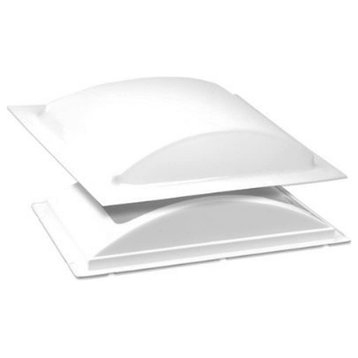
White Low Profile Single Pane Exterior Skylight Kitby Invenitiah Furnishings
$204
Free Shipping
- Brand: Invenitiah Furnishings
- Speciality Recreation Skylight Kit, Low Profile
- Skylights are made of high performance thermoformed polycarbonate to be long lasting and easy to clean
- When choosing a Skylight, measure your rough hole opening as well as the overall exterior size
- There is a size to replace most manufacturer's original equipment
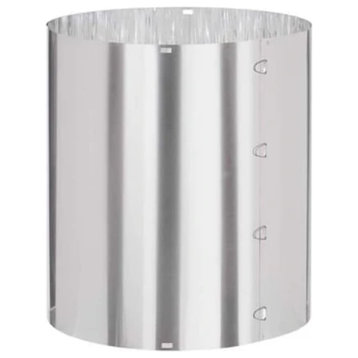
Sun Tunnel 2' Rigid Tube Extensionby Invenitiah Furnishings
$129
Free Shipping
- Brand Invenitiah Furnishings
- "24"" Rigid Extension for 14"" Sun Tunnel.
- Flex Loc TM Connector.
- Highest Quality Materials for Optimum Daylight Reflectivity.
- Made in USA.
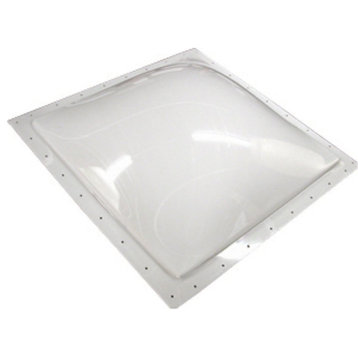
Smoke 18"x24" Skylightby Invenitiah Furnishings
$196
Free Shipping
- Brand: Invenitiah Furnishings
- Smoke color
- Skylights are made of high performance thermoformed polycarbonate to be long lasting and easy to clean
- No metal flange is used with these single pane skylights
- Skylights sit directly on your RV roof
- Hole size 18 inch x 24 inch.
Invenitiah LLC Low Profile Single Pane Exterior Skylight Kitby Invenitiah Furnishings
$227
Free Shipping
- Brand: Invenitiah Furnishings
- Speciality Recreation Skylight Kit, Low Profile
- Skylights are made of high performance thermoformed polycarbonate to be long lasting and easy to clean
- When choosing a Skylight, measure your rough hole opening as well as the overall exterior size
- There is a size to replace most manufacturer's original equipment
Invenitiah 22"x34" Smoke Skylightby Invenitiah Furnishings
$295
Free Shipping
- Brand: Invenitiah Furnishings
- Size 22 Inch x 34 Inch
- Product Dimensions 39.3""L x 5.3""W
- Item Weight 6 Pounds
- Number of Items 1
- Orientation Landscape
- Skylights are made of high performance thermoformed polycarbonate to be long lasting and easy to clean
- Skylights sit directly on your RV roof
- No metal flange is used with these single pane skylights
- Package Dimensions: 13.462 H x 99.821 L x 71.374 W (centimetres)
Skylights fill a room with natural light while also transforming spaces to feel roomier. An added plus to your sun tunnel is that it can improve the energy efficiency of your home. Take into consideration how you want the skylights to perform as well as your style preference and roof shape when determine what will work for you.
First, determine how you’d like to utilize your skylight. Do you simply want extra sunlight or do you also want to be able to open it and enjoy a fresh breeze? If it’s the former, you’ll want a fixed skylight, and if it’s the latter, you’ll need a ventilating skylight. Or, if you want to install a skylight in an enclosed space such as a hallway or pantry, choose a tubular skylight. Decide what style will best complement your space. In general, skylights are offered in flat, arched, domed and pyramid shapes.
The direction your skylight faces can make a big difference when it comes to energy efficiency. An east-facing skylight will provide abundant heat and sun in the morning, while one facing west will fill the room with sunlight at the end of the day. North-facing skylights will provide steady sunlight that’s not overbearing, while south-facing skylights will retain heat.
If your skylight faces east or west, you may want to add a blind to control the amount of sunlight that you let in to your space. You may also want to consider heat-absorbing units, UV protection or low-emissivity coatings to increase energy efficiency and prevent furniture beneath the skylight from fading. If you have a ventilating skylight, open it easily by choosing a motorized unit, and have it close automatically by installing moisture sensors for when it rains.
Glazing your skylights will further improve their energy efficiency. Economical and sturdy, plastic glazing is an affordable option yet isn’t as effective at blocking UV rays and may yellow over time. Glass glazing is more expensive, but is also more durable.
For maximum effect, your skylight should complement the size of the room it’s being installed in. When determining the right size, think about trying to equal one square foot of skylight for every 20’ of floor space. Don’t allow the skylight to take up more than 15% of the floor area in rooms with few windows, and no more than 5% in rooms with ample windows.
Choosing a light shaft relies on both an aesthetic preference as what your roof or ceiling can accommodate. Flared shafts will provide a larger beam of light due to an extended base, while straight shafts work better for flat ceilings short on area. If your ceiling is fastened directly to rafters, such as a cathedral or high-sloped ceilings, you may be able to install your skylights without a shaft.
What type of skylight should I consider?
First, determine how you’d like to utilize your skylight. Do you simply want extra sunlight or do you also want to be able to open it and enjoy a fresh breeze? If it’s the former, you’ll want a fixed skylight, and if it’s the latter, you’ll need a ventilating skylight. Or, if you want to install a skylight in an enclosed space such as a hallway or pantry, choose a tubular skylight. Decide what style will best complement your space. In general, skylights are offered in flat, arched, domed and pyramid shapes.
Where should I install the skylight?
The direction your skylight faces can make a big difference when it comes to energy efficiency. An east-facing skylight will provide abundant heat and sun in the morning, while one facing west will fill the room with sunlight at the end of the day. North-facing skylights will provide steady sunlight that’s not overbearing, while south-facing skylights will retain heat.
What features might I want to add to my skylight?
If your skylight faces east or west, you may want to add a blind to control the amount of sunlight that you let in to your space. You may also want to consider heat-absorbing units, UV protection or low-emissivity coatings to increase energy efficiency and prevent furniture beneath the skylight from fading. If you have a ventilating skylight, open it easily by choosing a motorized unit, and have it close automatically by installing moisture sensors for when it rains.
What types of glazes should I consider?
Glazing your skylights will further improve their energy efficiency. Economical and sturdy, plastic glazing is an affordable option yet isn’t as effective at blocking UV rays and may yellow over time. Glass glazing is more expensive, but is also more durable.
How large should my skylight be?
For maximum effect, your skylight should complement the size of the room it’s being installed in. When determining the right size, think about trying to equal one square foot of skylight for every 20’ of floor space. Don’t allow the skylight to take up more than 15% of the floor area in rooms with few windows, and no more than 5% in rooms with ample windows.
What type of light shaft will work best for my space?
Choosing a light shaft relies on both an aesthetic preference as what your roof or ceiling can accommodate. Flared shafts will provide a larger beam of light due to an extended base, while straight shafts work better for flat ceilings short on area. If your ceiling is fastened directly to rafters, such as a cathedral or high-sloped ceilings, you may be able to install your skylights without a shaft.





